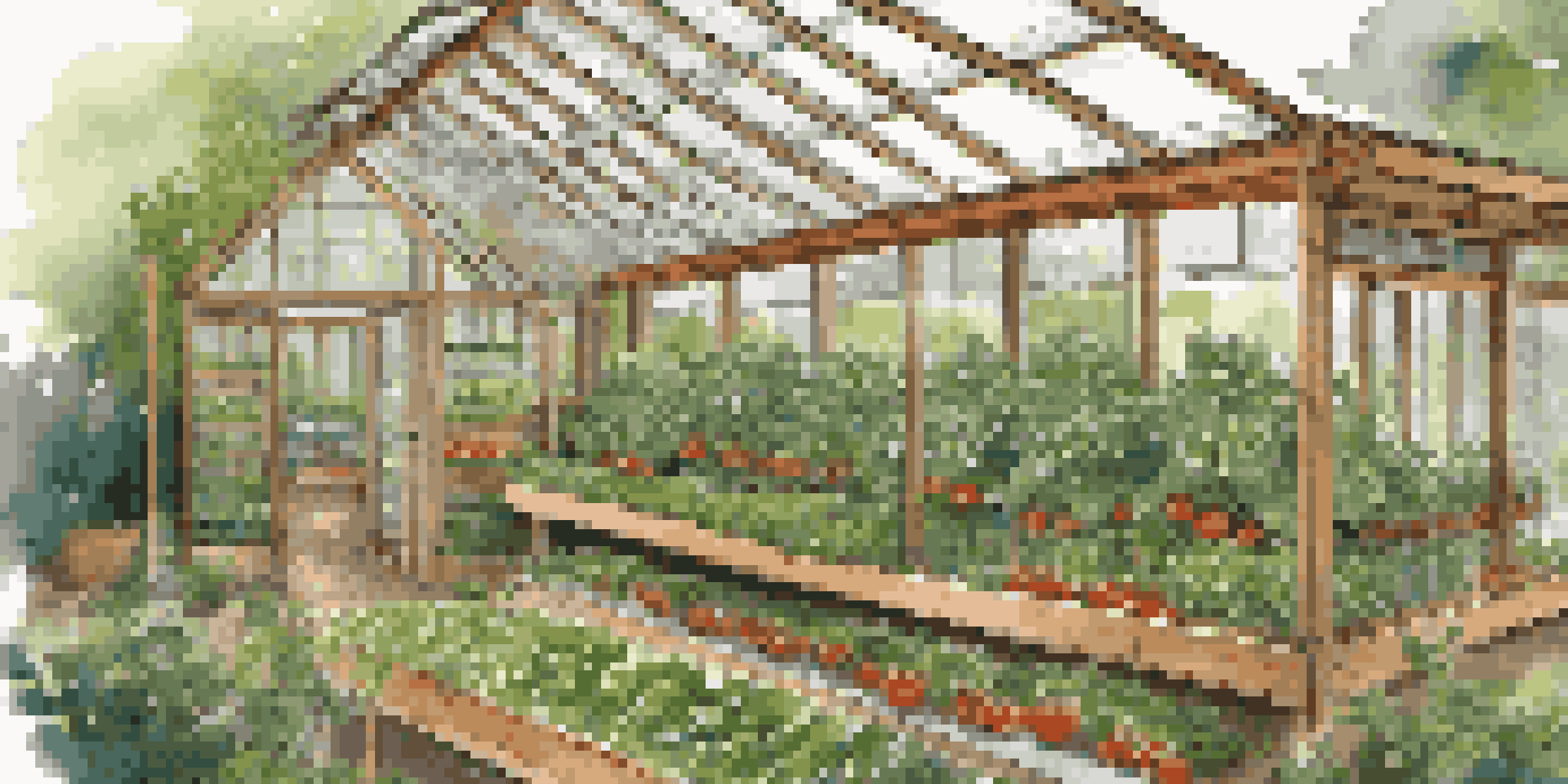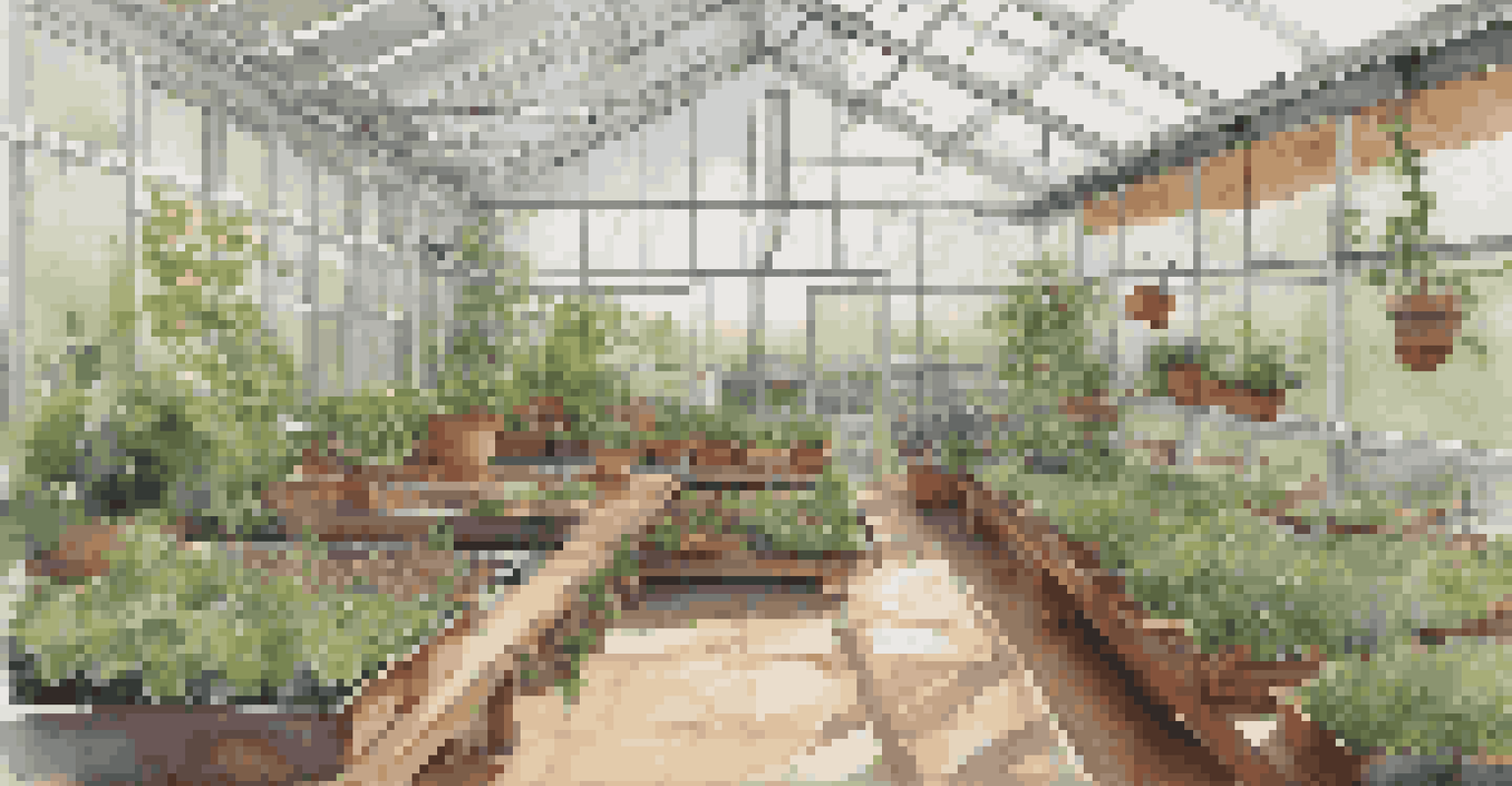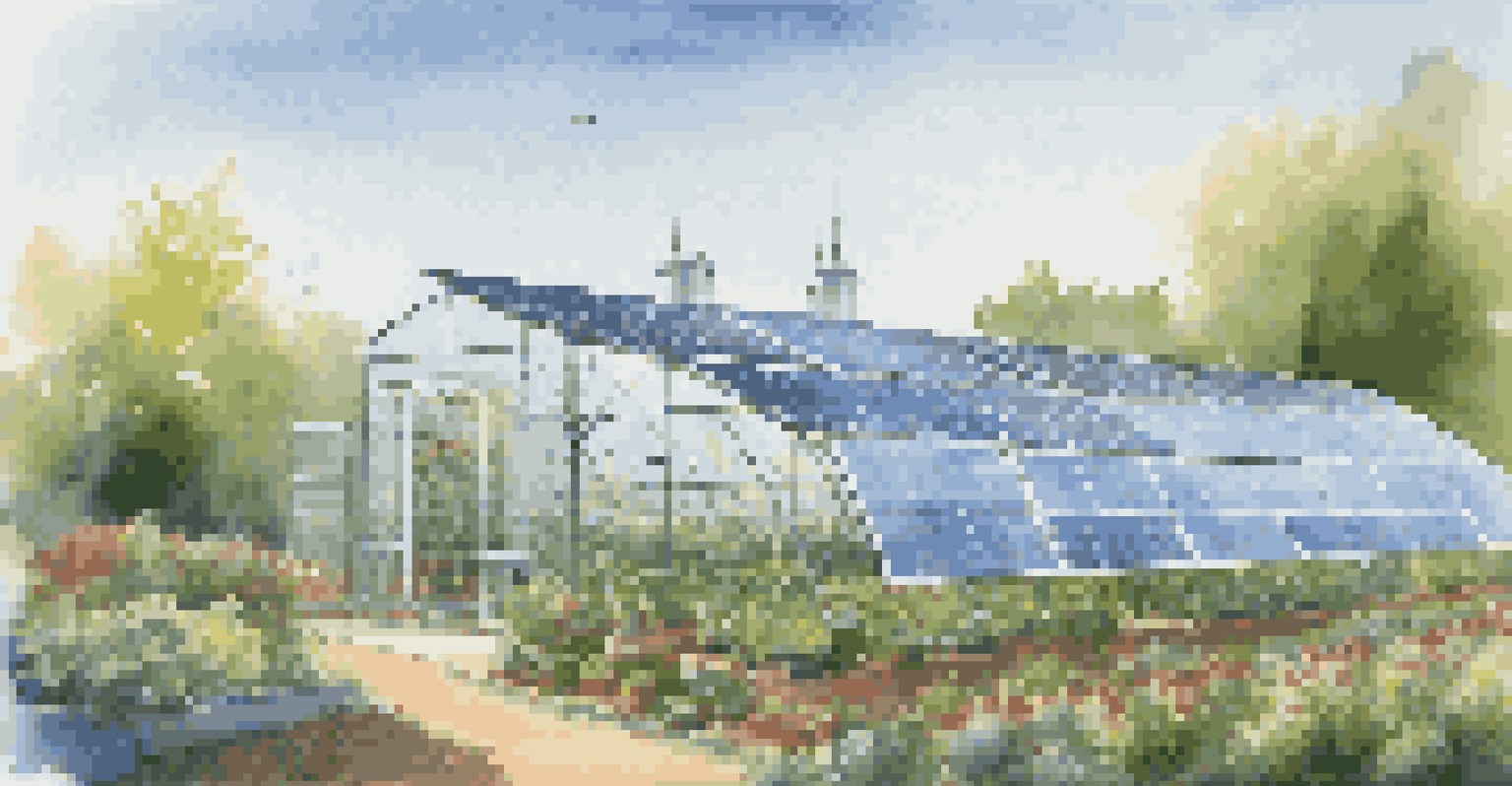How to Build a Sustainable Greenhouse for Year-Round Growth

Understanding the Basics of a Sustainable Greenhouse
A sustainable greenhouse is designed to maximize plant health while minimizing environmental impact. It uses natural resources efficiently, like sunlight and rainwater, to create an optimal growing environment. This means you can enjoy fresh produce year-round without relying heavily on external resources.
The greatest threat to our planet is the belief that someone else will save it.
To get started, consider the greenhouse's orientation, which should ideally face south to capture maximum sunlight throughout the day. This positioning not only warms the structure but also helps with energy efficiency. Additionally, incorporating natural ventilation can keep temperatures stable without the need for electric fans.
Remember, sustainability isn't just about materials; it's also about practices. Using organic gardening techniques and companion planting not only boosts plant health but also encourages biodiversity. This holistic approach will lead to a thriving greenhouse ecosystem.
Choosing Eco-Friendly Materials for Construction
Selecting the right materials is crucial for building a sustainable greenhouse. Opt for recycled, reclaimed, or sustainably sourced materials to minimize your carbon footprint. For instance, using reclaimed wood for the frame not only adds character but also reduces waste.

When it comes to glazing, polycarbonate panels are a fantastic choice. They provide excellent insulation, which keeps your plants warm during colder months while allowing ample sunlight in. This way, you won't need to rely on additional heating sources, making your greenhouse more energy-efficient.
Sustainable Design for Greenhouses
A sustainable greenhouse maximizes plant health while efficiently utilizing natural resources like sunlight and rainwater.
Consider incorporating a rainwater collection system to further enhance sustainability. By directing rainwater from your greenhouse roof into barrels, you can create a self-sustaining irrigation system. This not only conserves water but also reduces your reliance on municipal water sources.
Designing for Maximum Sunlight and Ventilation
Proper design is key to maximizing both sunlight and ventilation in your greenhouse. A well-thought-out structure should have ample windows or vents that can be opened to allow fresh air in. This circulation is vital for preventing mold and ensuring your plants receive the necessary carbon dioxide.
Sustainability is no longer about doing less harm. It's about doing more good.
Consider using louvered windows that can be adjusted based on the weather. This simple feature can make a big difference in regulating temperature and humidity levels inside your greenhouse. You might also want to integrate shading options, like shade cloths, to protect delicate plants from extreme heat.
Another essential aspect of design is the layout of your plants. Grouping taller plants on the north side allows shorter ones to benefit from more sunlight. This strategic arrangement not only optimizes light exposure but also maximizes your growing space.
Implementing Efficient Heating Solutions
Heating a greenhouse sustainably often involves creative solutions. Instead of traditional heating systems, consider passive solar heating. This method utilizes the sun’s warmth stored in thermal mass materials, like stone or concrete, to maintain a stable temperature.
You can also look into using compost heat as an alternative. By placing a compost pile near your greenhouse, you can harness the heat generated from decomposing organic matter. This not only warms the greenhouse but also provides nutrient-rich compost for your plants.
Eco-Friendly Materials Matter
Choosing recycled and sustainably sourced materials for construction reduces your carbon footprint and enhances the greenhouse's sustainability.
For colder climates, installing a solar water heater can be an excellent investment. It uses solar panels to heat water, which can then be circulated throughout the greenhouse. This method is efficient and significantly reduces energy costs.
Creating a Water-Efficient Irrigation System
An eco-friendly irrigation system is vital for any sustainable greenhouse. Drip irrigation is an excellent choice as it delivers water directly to the plant roots, minimizing evaporation and runoff. This method conserves water while ensuring your plants receive the moisture they need.
Integrating smart technology can further enhance your irrigation practices. Consider using soil moisture sensors that automatically adjust watering schedules based on the needs of your plants. This not only saves water but also optimizes plant health.
Additionally, setting up a greywater system can help recycle water from household uses, such as sinks or showers, for irrigation. This method reduces waste and makes your greenhouse even more sustainable.
Incorporating Renewable Energy Sources
To truly embrace sustainability, consider incorporating renewable energy sources into your greenhouse. Solar panels can provide a significant portion of the energy needed for heating, lighting, and irrigation. By harnessing the sun's power, you can reduce your reliance on fossil fuels.
Wind turbines are another option, especially if you live in a breezy area. Small wind generators can supplement the energy needs of your greenhouse, making it even more self-sufficient. This dual approach of solar and wind energy can greatly enhance sustainability.
Efficient Irrigation and Energy Use
Implementing smart irrigation systems and renewable energy sources can significantly improve water conservation and energy efficiency in your greenhouse.
Don't forget about battery storage systems, which can store excess energy generated during sunny or windy days. This stored energy can then be used during periods of low production, ensuring your greenhouse remains operational regardless of external conditions.
Choosing the Right Plants for Year-Round Growth
Selecting the right plants is essential for a successful year-round greenhouse. Start by choosing hardy varieties that thrive in different seasons. Cool-season crops like kale and spinach can flourish in the cooler months, while tomatoes and peppers can be grown during warmer periods.
Consider implementing a staggered planting schedule to maximize your harvest. By planting different varieties at different times, you'll ensure a continuous supply of fresh produce throughout the year. This not only diversifies your diet but also keeps your gardening experience exciting.

Finally, don't overlook the benefits of companion planting. Certain plants, when grown together, can enhance each other's growth, repel pests, and even improve flavor. This natural synergy among plants can lead to healthier crops and a more productive greenhouse.